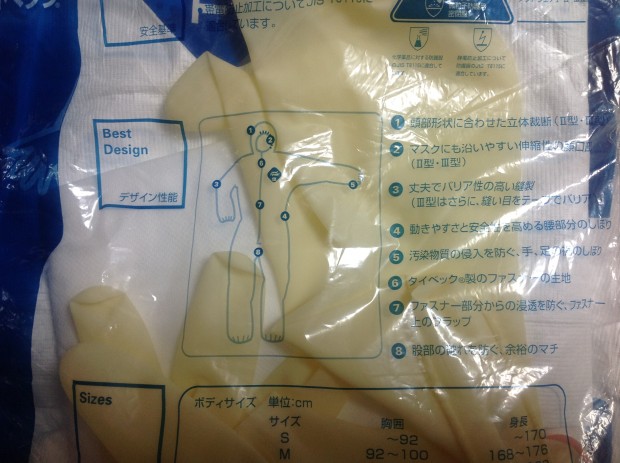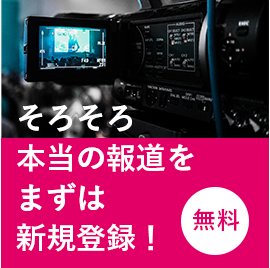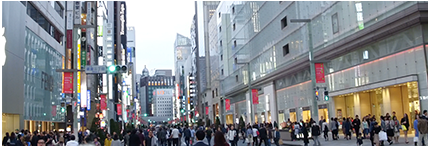Stunning Story from a Fukushima Daiichi Nuclear Power Plant Worker By OSHIDORI MAKO
May 27, 2013
Mako Oshidori of Yoshimoto Creative Agency is a member of the Manzai Kyokai (The Association for Stand-up Comedians) and of the Board of Directors of the Free Press Association of Japan. She regularly attends press conferences given by public authorities and TEPCO since the outbreak of the Great East Japan Earthquake. She also relentlessly does reporting on Fukushima and other disaster-affected areas. She presently writes columns for “DAYS JAPAN” and “MAGAZINE 9”. For donations, please go to the link below:
http://oshidori-mako.laff.jp/blog/2011/07/post-ad67.html. Thank you for your support!
Excerpt from column #57 “Iwakino Mama Tachi to Chikachosuisou to Sagyoin no kata no Ohanashi no Ken” literally, “About mothers in Iwaki, underground water tank and stories from a worker” of “Datsutte miru?” on MAGAZINE 9. http://www.magazine9.jp/oshidori/130415/index.php#san
Stunning Story from a Fukushima Daiichi Nuclear Power Plant Worker
I heard a stunning story which made me think that the leak of concentrated salt water from an underground water storage tank is a relatively minor accident.
On April 11, I talked with a Fukushima Daiichi Nuclear Power Plant worker and a young professor of theUniversityofTokyo.
Why skimp on money and time in the management of a level 7 nuclear accident?
Worker: I think that leaks here and there are a normal thing.
-- Are you serious? Why?
Worker: Because it was a situation of emergency in which a lot of facilities were built in a rush. After the accident, facilities were being built in such a speedy fashion that it did not matter if they had to last for only one year or so.
Some constructors have even put the sentence “Quality is not guaranteed” in the contract. Facilities built and supposed “to last for only one year” are still being used. It is normal that their condition deteriorates.
-- Shocked...
Worker: In addition the effort to secure “cheaper commissions in order to cut down expenses” is also a problem. The government allocates funds to TEPCO for the management of the nuclear power plant accident, but the money is not a grant. It is a debt and must be refunded in the future.
Since the Fukushima Daiichi Nuclear Power Plant is not expected to generate profit in the future, it is normal that TEPCO seek to reduce its debt as much as possible.
That is the reason why “cutting the budget, reducing the cost, and using lower price materials” for constructions and facilities in the management of the nuclear power plant accident is the order of the day.
On the ground, there are no such attempts as to gather the brains of the World in order to effectively deal with the nuclear accident.
-- That is quite far from gathering the brains of the World. It’s just a get-together of stingy people, right?
Worker: It is stinginess not only with money but with time, too. Orders such as “It is the fiscal year-end. So hurry up and complete the construction work!” are common. Sometime you hear things such as “It is the fiscal year-end, there is no more funding available”. Why should the “fiscal year-end” take priority over any other matter in an unsettled situation of a Level 7 nuclear disaster?
Is it alright to entrust the management of a nuclear power plant accident to just one business entity such as TEPCO? As long as TEPCO is a business entity, it is in pursuit of profit and book closing at the year-end is part of that. So, I think that things won’t work if the management of the accident and the decommissioning project of the Fukushima Daiichi Nuclear Power Plant are not separated from TEPCO and entrusted to an ad hoc specialized team.
With the same personnel recruiting policy as before the accident, the recruitment of workers for the accident management is going to be a failure.
Worker: The problem is not only money, but also the recruitment of workers. It is getting really difficult to secure manpower for the accident management.
Workers who have already been exposed to doses of radiation beyond the prescribed limit have to disengage from work. It was predictable that skilled and experienced workers would be decreasing.
Also, there are workers coming from faraway places, who just want to make money in a short period. I know it is not a problem peculiar to the nuclear power plant. It is the shady side of the construction industry.
Before the accident, such workers used to do their job with the original contractor under the supervision of up to 4 or 5 subcontractors. But after the accident, it became hard to secure enough workers even by arranging to have much more, for instance, nine or ten subcontractors. And by resorting to so many subcontractors in between, wages suffer considerable reduction.
What happens is that workers who come to Fukushima from faraway regions to make money stay at workers’ lodgings and become aware of a certain fact through their interaction with other workers.
They learn that wages for decontamination work are higher and the work itself involves less risk of radiation exposure than construction work at the power plant. Then these workers switch their jobs from construction to decontamination work.”
-- Oh... I have heard about this situation from some other workers.
Worker: There is another kind of workers. They are workers who came from other nuclear power plants disseminated all overJapan. Now most of these nuclear power plants are shut down, right? These workers come here toFukushima by appointment or choose to bring their contribution as a sort of mission or from a certain sense of responsibility.
However, in the future, closed nuclear power plants will be restarted one after the other, which means that most of these workers will return or be asked to return to their original nuclear power plants.”
-- Really? As suspected, will they be restarted one after another?
Of course! Things are taking that direction. It is in order to restart the closed nuclear power plants that the Nuclear Regulation Authority has already released a roadmap for inspection operations. No wonder, workers are going to be asked to resume their plants for such operations.
As the Nuclear Regulation Authority released the “Outline of the New Safety Standards (Draft)”, some electric power companies have already started with investigation, inspection, and construction. Meanwhile, nuclear workers from all over the country are returning to their original power plants.
Worker: Original workers at the Fukushima Daiichi Nuclear Power Plant are more and more exceeding their dose limit of radiation exposure. The workers from other nuclear power plants are returning to their former plants. Workers who come to Fukushima from other parts of the country to make money are decreasing and difficult to recruit.
Not only building facilities with low price materials in order to cut down expenses, but securing manpower is also a serious problem.
-- Both the cost and manpower are serious problems…
Worker: There is also a problem related to the status of workers. This is a deeply rooted dark side of the construction industry, but shifting between 3 or 4 subcontractors is a real issue.
As I mentioned a little earlier, we are now working with people who subcontract with up to the ninth lower company. Suppose that a team of 10 workers doing the same work has members with different contract statuses, say, subcontractors who are under the supervision of a third or a sixth lower company. To avert the so-called “Contract Fraud”, team leaders of the prime or the second contractors are not allowed to give direct instructions to workers of the sixth or ninthsubcontract companies.
It is true that giving direct instructions without direct employment is illegal and there is a lot to be done about the whole dark side of the construction industry. However, such regulations might turn out to be a hindrance to an effective management of the nuclear power plant accident.
At work sites, team leaders can’t give instructions such as “this work should be done like this” in fear of being taxed with contract fraud in case the concerned person complains that “I received instructions from someone who I has no direct employment relationship with.” So, the leaders are afraid to give instructions. That is another problem.
Certainly contract fraud is wrong. But, in a situation where people of various statuses have to work together due to the shortage of manpower, such regulations are quite unreasonable. I hope that such working conditions are going to be changed. The government and other organizations should join forces to manage all the labor for an effective management of the accident. This is one of the reasons why I think that TEPCO should step down from the management of the Fukushima Daiichi Nuclear Power Plant.
Reactor #4’s problem is not only its nuclear fuel pool!
Worker: Regarding the accident management, TEPCO has the tendency to cover up the issues that are noised about. No long-term plan for the decommissioning of the plant is put into execution. What is being done is rather the execution of a haphazard plan just to hoodwink the public attention. Issues out of the public eye are just left out.
The spent fuel pool of reactor #4 is being talked about, isn’t it? Strategies or plans have soon been put into place to address this issue. But I think the spent fuel pool is not the only problem reactor #4 faces.
There is a Device Storage Pit (DSP) on the other side of the reactor well opposite to the spent nuclear fuel pool. The DSP is not used at normal time operations. But when the earthquake hit, reactor #4 was under periodic inspection. Just before the earthquake, upon removing the shroud from the reactor well, it was cut off under water and put into the DSP. So inside the DSP of reactor #4, there are a lot of fragments of highly radioactive shroud.”
(A shroud is a cylindrical stainless steel structure fixed inside of the Reactor Pressure Vessel. It surrounds nuclear fuel assemblies and control rods. It also serves as a divider to secure the cooling water flow in a reactor. It is as large as 7 meters in height, 4.5 meters in diameter and 35 tons in weight. Since the shroud is inside the reactor while fuel rods reach a critical state, it naturally contains a high dose of radiation. It is the shroud inside the DSP which is on the opposite side of the spent fuel pool of reactor #4.)
Worker: The DSP is full of water and, as you know, the shroud and a lot of other devices are in it. The overall seismic resistance of the DSP was estimated for one year. Now that the nuclear reactor building is weakened by the explosion, I’m worried about what is going to be done with the DSP.
When fuel rods from the spent fuel pool were about to be removed, a suggestion was made that materials stored in the DSP be removed as well, but it was rejected because “we don’t have enough budget for that, the issue of concern to the public now is the spent fuel pool”.
--Oh no! I wonder how long the DSP is going to resist…
Worker: The covering work of reactor #1 was finished, too, but it was also a symptomatic measure. The cover is not demountable. Eventually the decommissioning operations are going to be done inside the nuclear reactor building, so I wonder how the cover is going to be removed…. I think it must require a great amount of labor. The cover was placed in order to “reduce the emission of radioactive substances into the atmosphere and, thus, appease the concerns of the public over radiation” as an emergency measure.
The more I hear, the more I get disappointed. I gradually began to understand why the leak of concentrated salt water from an underground water storage tank is relatively a minor accident.
What if the reactor #2 situation worsens?
Worker: Yes, the problem of the underground water storage tank is trivial, because the mother of all problems is neither the radioactive pollution nor the cooling system, but the nuclear reactor buildings and reactors themselves. How are reactors #1 to #4 going to be demolished and disposed of? The current situation is that nobody can even get inside. Comparing to that, workers on-site feel that, problems outside the building such as the metal-clad distribution switchboard or the underground water storage tank are trivial, though they are serious, too.
-- Then, what is the most serious problem?
Worker: That is undoubtedly reactor #2.
Professor of Tokyo University: As I thought! Even among researchers, the situation of reactor #2 is beyond imagination.
Workers: About reactor #2, nobody knows exactly what is going on inside or what happened just after the earthquake. The explosion of reactors #1 and #3 could be simulated to a certain degree. From various parameters, we could predict the initial response and what was going to happen next.
But we are clueless about reactor #2. Why was such large amount of radioactive substances emitted without explosion? What is happening with the fuel rods? From various parameters, it is said that there is no melt-through of fuel rods.
Professor of Tokyo University: I agree. It seems like fuel rods did not go through the Reactor Pressure Vessel.
Worker: Then why were such large amounts of radioactive substances emitted outside the building? Nobody knows the answer!
(The amount of radioactive substances emitted from reactor #2 is way larger than from reactors #1 and #3!)
Worker: The condition of reactor #2 just after the earthquake cannot be estimated. At the same time, doses of radioactivity are surprisingly high in the building of reactor #2.
I’ll give you an extreme example. Let’s assume that the situation worsens to the point that it becomes impossible to pour water in order to cool off the reactor. For reactors #1, #3 and #4, a specialized squad prepared to bear the risks of radiation exposure can always enter the building and do the work required.
But in the case of reactor #2, radioactive emissions inside most buildings are extremely high that a prepared squad is likely to perish before it accomplishes its mission.
-- I’ve never thought the situation is so severe.
Worker: Now you clearly understand why I can’t help thinking that the work outside the building such as the metal-clad distribution switchboard or the underground water storage tank is trivial. Exposure to radiation cannot be avoided but the work can still be performed in such locations.
********************
ADDENDUM
The Level 7 nuclear disaster has not yet been averted. The actual management of the accident will hardly bring a solution. If TEPCO does not step down from the control of the Fukushima Daiichi Nuclear Plant soon, Japan is likely going to face a critical situation again. This is the message I wish you to spread. These are the words of the worker interviewed.
I transmitted the message to “Iwaki no Shoki Hibaku wo Tsuikyu Suru Mama no Kai” (Mothers’ Association for the Pursuit of Initial Radiation Exposure).
Mothers: As expected, the announcement of the cold shutdown state was premature. There are absolutely no specific plans on how to rapidly evacuate children if another big disaster happens at the Fukushima Daiichi Nuclear Power Plant.
Iwaki plays a role in supporting the recovery effort of the nuclear power plant accident. But if something happens, we want that children be evacuated immediately.
As long as the nuclear power plant accident is classified under Level 7, people of Iwaki should pay more attention and consider various solutions. The safety of workers, the evacuation of children, and the safety of Japan are all equally important issues to us.”
********************
Post-Addendum
By the way, the increasing contaminated water will eventually be discharged into the ocean after radioactive substances have being gotten rid of as much as possible with the Advanced Liquid Processing System (ALPS), a multinuclear removal system.
At the end of 2011, I also received a phone call from another on-site worker announcing that the “Test operation of ALPS has started! I heard the contaminated water will be discharged into the ocean after the removal of radioactive substances as much as possible using ALPS.”
I soon asked a question about it at a joint press conference, but Mr. Matsumoto, the TEPCO spokesman said “There is no such a plan.” I had the impression that TEPCO just didn’t have the courage to say that they were going to discharge water treated with ALPS into the sea. Since then the issue of the test operation remained untouched and time goes on.
Worker: In fact, the system was only partly operated and abandoned for an entire year. I think that it is because concerns rose over the eventual practical use of ALPS. It was certainly feared that something could go wrong with the system.
However, the “multi” nuclear removal system can’t remove tritium!!
All the above is a story counted by a worker at the Fukushima Daiichi nuclear power plant. His message is that the nuclear power plant accident is not over yet, and that it is most likely to get worse. He invites you to be proactive in the efforts carried out for change all over the country and in the society.
[Excerpt from “Datsutte miru?” on Magazine 9.]
[caption id="attachment_9261" align="alignleft" width="523"] Tyvek protective clothing received from another worker[/caption]
Tyvek protective clothing received from another worker[/caption]
(Translated from Japanese by Naoko Miyajima)







